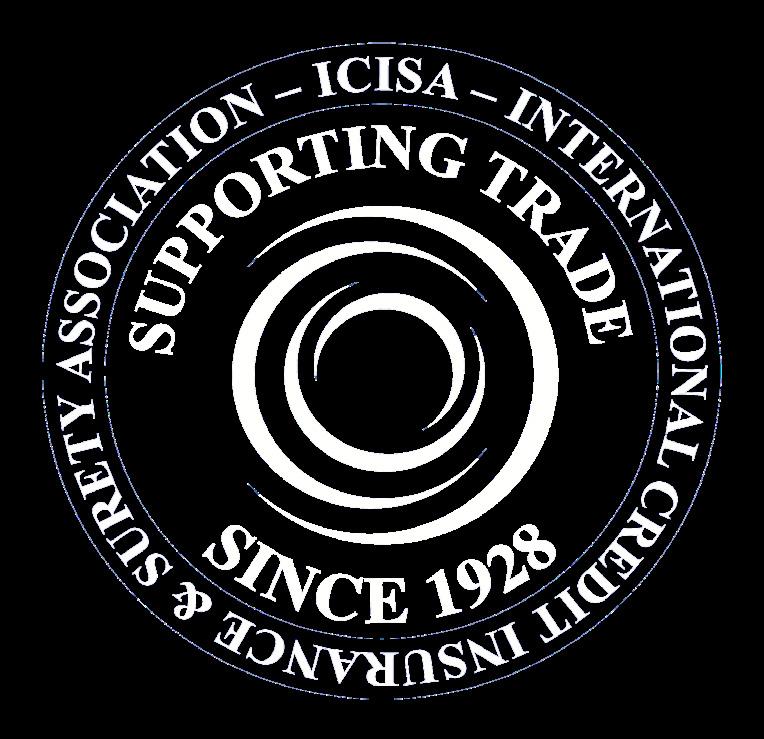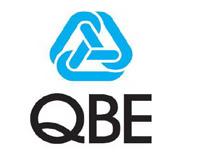




Dear Reader,
Welcome to the latest edition of the ICISA Insider magazine. While many of you are probably already preparing for the end of the year, I would like to share some thoughts on months since our last Insider was released.

The summer months went by quickly after our AGM in Helsinki, with the Secretariat focused on preparing Trade Credit Insurance Week. And this preparation paid off in the end! A huge number of professionals from the Trade Credit Insurance and related industries joined us for this first edition. The high level of engagement and positive feedback makes us confident about the future versions of TCI Week and Surety Week we will organise. More about the event and its success is covered by Raluca on Page 16.
The ongoing Russian invasion of Ukraine is a tragedy in so many respects, most notably for the people of Ukraine. But the war also continues to have an effect on economies around the world, thus impacting our sector too. On Page 10, Gordon Cessford gives five strategies to protect businesses in a challenging economic environment. While our industry is affected by the current crisis, Charles Nortje, the columnist of this edition, highlighted the need why insurers should be more selective picking their new “partners for life“ (page 4).
A highlight more recently was the visit of our Management Committee to our office at Schiphol Airport and the hybrid Surety Committee meeting, with some of the delegates coming to our office too. It was great to meet and discuss face-toface, and to introduce our members to our office and its surroundings. All other committees met online and good discussions were had by all. Updates from the committee chairs can be found on this edition on Page 6.
Finally, while we all know that business today is driven more than ever by data, Thomas Frossard from Tinubu explains what artificial intelligence offers to credit insurers to gain full advantage from the available data sources. (Page 14). I hope you’ll enjoy reading this edition.
 Richard Wulff
Richard Wulff
All articles in the ICISA Insider represent solely the opinions of the individual authors, not ICISA, unless otherwise stated. Original articles appearing in the Insider may not be reprinted without the express permission of the author and ICISA. When citing articles, please refer to the title of the article, the author, and the relevant edition of the Insider, including a full url to the article page.


Many insurers have something in their corporate mission statement that, “ …we aspire to be our client’s first choice in the market” or something along these lines. This is completely understandable. Beginning with our personal lives, who wants to be someone’s second choice or even, heaven forbid, their last choice? But to be controversial for a moment, I’m not at all convinced that being a client’s first choice of Trade Credit insurer is the recipe for our own sustainability and profitability. To have clients select us in the first place is really nice, but we are not Motor insurers jostling for position in an overtraded market. When we are selected, we still need to apply a stringent filter. In Trade Credit, I believe that client selection is crucial to success.
KYC (know your client) and its close cousin, ABC (anti-money laundering, bribery and corruption) are an essential starting point. We simply have to get this right in client selection. The recent Russia sanctions have presented enormous challenges for both insurers and reinsurers to identify sanctioned entities and their immediate connections. Sometimes sophisticated tools are needed to sift through client data. Nothing kills risk appetite for our boards, shareholders, reinsurers and other stakeholders faster than compliance and regulatory breaches. Its not enough to dismiss negative media reports regarding our customers as mere speculation. Proper enquiry has to be made.
The preferred client is prepared to back their own credit extension decisions with appropriate “skin in the game” from their side. I must wonder at the wisdom of policy structures with an insured percentage of 100%, or no aggregates in place where the client is prone to frequency losses. The better clients do not regard their credit insurer as a dumpster for routine poor credit decisions. Their credit insurer is viewed as a goalkeeper, only where all other lines of defence have failed, or in the case of a catastrophic unforeseeable event.

Better clients approach problems with late payment of a buyer, particularly a large buyer, in a spirit of problem-solving and collaboration with their insurer in a workout process. After all, the client may have a long commercial relationship with the buyer and is in the best position to exert pressure and influence on the buyer to come back into payment terms. Patience and tenacity are often called for with collections. It doesn’t serve a credit insurer well if the first reaction of the client is to submit a claim and offer the bare minimum co-operation, simply washing their hands.
The better client actively assists their credit insurer with information gathering for underwriting purposes. This is particularly true of frontier markets and economies which are not information-rich. Joint buyer visits to sometimes difficult locations establishes underwriting information on the ground, and feeds a virtuous triangle of relationships between policyholder, buyer and credit insurer. This triangle is an enormously important asset should problems arise later on.
In my experience, the most brilliant outcome is where we develop the relationship with a well- selected client to the point that our growth strategies and profitability are inextricably linked. When we reflect and plan our future ambitions together with a preferred client, we acknowledge how we have become part of the fabric of each other’s businesses. Truly a partnership for life - rather than a dating agency.


Chair of the Surety Committee Company: Liberty Mutual

While we are still recovering from a pandemic, 2022 looks to be a year which turns the world upside down in many new ways. While we are trying to get a sense of what is going on, I believe an equally important question is how we can stay connected.
The Surety Committee of ICISA met in October for the first hybrid meeting ever organised by ICISA. While some of the members decided to travel to ICISA’s office, some stayed at home and attended the meeting online. This new structure did not stop us getting into constructive discussions on topics the industry is facing today. Among the topics covered were: the impact of inflation, increasing material prices, energy prices, supply chain shortages, as well as increasing interest rates - the list might be even longer.
We agreed among the participants that continuous exchange is beneficial for our industry, because it educates the parties involved and ensures we are aware of risks. During the meeting, members of the Surety Committee reflected on what kind of risks their clients are confronted with.
A conclusion of the meeting was that, despite all various economic obstacles and sectoral challenges, underwriting
comes down to the usual basics such as Character, Capital, Capacity, Collateral. However, the clarity and definition of each risk makes today’s underwriting somehow an expanded challenge. Among the aspects that give complexity to the risk assessment we covered: volatility in the markets, inflation, supply chain disruption, political instability, climate issues, weather incidences.
Despite all these, the underwriting community tries to drive innovation as each of the crises opens up opportunities. Specific bond types which were heavily demanded in recent times due to the energy crisis, and the role of investors with diverse approaches were discussed.
For me, engagement in discussions is key to get our industry and our clients through this rough patch. A boat is not made for the shore, but for sailing in the waves. While in the upcoming months we will be busy sailing in the waves, I’m looking forward to the upcoming Surety Week in February 2023, where again various stakeholders of the Surety industry will be engaged.


When the SRC last convened in Helsinki in June, the Russian invasion of Ukraine was at the forefront of everybody’s thinking. The war continues to exact a dreadful toll on the Ukrainian people. Ukraine has shown an eye-opening level of resistance and resilience.
At the virtual SRC meeting in late September, participants reported an increase of watchlist items and of preliminary loss notices, mainly relating to the destruction of assets in or close to Eastern Ukraine. Single Risk losses in Russia and Ukraine are expected to remain at manageable levels from an industry perspective.
On a global level, the Russian invasion has ushered in a new era of exacerbated volatility, increased inflation, high interest rates, energy shortages and supply chain disruptions. Going into the Pandemic in early 2020, there was a false level of certainty on which industries would be impacted most (aviation, leisure, energy,…). Given the multitude of different stress points, there is no such clarity now.
While SRC members believe that there will be a general increase in insolvencies during 2023, the impact is not black or white in terms of industries and regions. Against the backdrop of this new reality, the SRC members’ Single Risk strategies are fine-tuned and more tailor-made. With this in mind, the Single Risk market is experiencing a continued trend towards OECD countries and to industries such as networks, data-centres, and renewables. As part of this trend, SRC members see an increase in tenors (i.e. renewable project finance) and in complexity of structures (i.e. SRTs).
SRC members believe that picking future-proof transactions will improve resilience in the current environment. The SRC plans to reconvene at the annual Open Forum in London to take place on the fringes of the ExCred International Conference in early March 2023 to re-assess the situation.

The ICISA Credit Insurance Committee held an online meeting on 14 September , taking place just three and a half months after the previous meeting in Helsinki. The time span in between included the “summer break”, so this was mainly a follow-up to our larger gathering in Helsinki in June.
While few genuine new topics were brought up, it was still clear that a few developments had been proceeding rapidly during the summer. The Russian-imposed war had seen some surprisingly strong resistance by Ukraine and was expected to last for some time to come. Naturally, the ongoing conflict has related economic effects, which we are seeing in several markets. Supply chain disruptions due to the Covid19 pandemic continue to prevail yet appear to show a certain relief, albeit perhaps temporarily. Widespread inflation kicked in on the back of soaring energy prices and remaining shortages in a number of sectors.
The discussion on whether it may be useful if ICISA facilitated a common platform in charge of developing standards on certain wording items like the sanctions clause, war exclusion clause or clauses where banks are insured was picked up again. This also related directly to the question of
whether ICISA was an eligible body at all to facilitate such platform to ensure that any discussions happen in a manner that is transparent and compliant from an anti-trust and competition perspective. This topic has plenty of interest among members and will need to be considered further.
Another topic revisited related to ways in which to manage the transition of a customer from a previous insurer to a new one, including to see whether it is possible to establish whether active limits remain at the end of the previous from another insurer. This topic is also likely to have some difficult practical questions, as well as a further need to ensure compliance with legal and regulatory requirements.
While rather compact after the previous one, the meeting was appreciated as a good opportunity for exchange, especially in challenging times and a quickly evolving macroeconomic environment.
The upcoming virtual Committee of Underwriters meeting will be held in Q1 2023.

This compact volume is a practical guide for anyone interested in Trade Credit Insurance. The International Credit Insurance & Surety Association (ICISA) presents an approachable but detailed guide written collaboratively by carefully selected industry experts. The guide describes the lifecycle of the credit insurance product, from the initial application stage to the expiration phase of the policy, including practical use aspects for credit managers. The volume offers compact information on the history of trade, the need for protection against trade credit risks, and solutions offered by credit insurance providers. The focus is on short term credit, including whole turnover policies and single risk policies.

Suitable for anyone interested in Trade Credit Insurance, from credit managers to policymakers.
• Collaboration of a diverse group of experts from top organisations around the world
• Written in an approachable style, accessible to the non-specialist
• Includes extended glossary of key terminology
• Includes a list of relevant resources for further reading
Foreword; Introduction; Disclaimer; 1.What is trade?; 2. What is trade credit insurance?; 3. Product types; 4. Risk types; 5. Typical set-up of a trade credit insurance contract; 6. Premium, the price for cover; 7. Day-to-day policy management; 8. Buyer risk underwriting in trade credit insurance; 9. Debt collection; 10. Imminent loss and indemnification; 11. Renewal, expiry, termination of a policy; 12. Single risk business; 13. The single risk insurance market: Private and public players; 14. Reinsurance of Trade Credit Insurance; Trade Credit Insurance resources; Glossary of trade credit terminology
The International Credit Insurance & Surety Association (ICISA) brings together the world’s leading companies providing trade credit insurance and surety bonds. ICISA promotes technical excellence, industry innovation and product integrity, as well as addressing business challenges generated by new legislation.
The book can be ordered from Barnes&Noble and Bol.com
A practical and accessible industry-wide reference on Trade Credit Insurance, written by a team of industry experts.
The past two years have witnessed exceptionally high levels of economic turmoil. In fact, a plurality of economic indicators suggests that these have been the two most volatile years since the Great Depression. Naturally, these exceptionally high rates of volatility have generated concerns about risk and change for nearly all global enterprises.
While we have started recovering from the pandemic effects supply chains are improving and trade reopening, it is clear that this state of economic uncertainty will likely continue for at least the next few years.

There are currently four primary problems that global enterprises should worry about: geopolitical conflict, supply-chain disruptions, inflation, and insolvencies.
There are many ongoing conflicts hindering global trade but the most impactful has been the still-raging conflict between Russia and Ukraine. Recently, Russia has leveraged its status as a leading energy supplier to slow or even entirely halt the production and distribution of resources throughout Eastern Europe and elsewhere. Additionally, the geographic importance of both nations has created new challenges for shipping companies (especially in the Black Sea). Unsurprisingly, this conflict, among others, has triggered a sharp increase in invoice defaults.
Supply chains have also been disrupted by China’s recent (and current) policies. The country’s “absolute zero” approach to COVID-19 has significantly hampered the supply chain, slowing operations and even closing some ports. As the world’s largest producer of goods, the impacts of China’s approach are being felt around the world.
And inflation has not made this situation any easier. In some countries, stagflation remains rampant. The extreme rise in prices in almost every global market has made it significantly more difficult for production and distribution firms to make necessary changes. Though certain factors, such as globalization, tamed wage growth, and digitization, might be counteracting inflation to a certain extent, the probability of a global recession has increased.
Even if global inflation is past its absolute peak, the baked-in figures have undoubtedly put many firms at risk of insolvencies. Near-term changes in insolvency rates will largely depend on whether national governments decide to continue support. Nevertheless, insolvency volatility is yet another factor compounding the current state of uncertainty.
In response, many companies have looked toward Trade Credit Insurance, which helps global enterprises protect their accounts receivable and decrease their general exposure to insolvency risk.
TCI can be extremely beneficial in certain situations. There are several other actions that enterprises can take to decrease the likelihood of their partners defaulting on their invoices.
Invoice defaults are different (and more problematic) than late payments—oftentimes, when a partner defaults on an invoice, it is the result of several months of financial challenges.
In other words, these defaults are only occasionally a total surprise. There are usually many financial indicators suggesting that a default is likely to occur. Enterprises that are willing to do their due diligence and understand the internal dynamics of every firm they partner with will have a much better time evaluating their exposure to risk and, ultimately, finding partners that are compatible with their personal risk profile.
In order for an enterprise to “truly” understand the partners they are working with they will need to be aware of the biggest threats these partners are facing. Even if there is a long-term relationship between these firms—as the past few years have shown—turmoil can emerge at any moment. No enterprise exists in total isolation; any structural exposure to risk held by a partner is an exposure to risk that is necessarily also held by the firm itself.
At every point in the supply chain, communication is absolutely critical. If a key partner is missing or late with their payments, neither will benefit from keeping the other in the dark. Whenever payment issues emerge, it is incumbent on both parties to communicate directly and find a mutually beneficial solution—this is certainly preferable to the possibility of default.

Throughout the pandemic, direct communications were rarely treated as a top priority. The use of digital and indirect communication strategies significantly increased. But now that the pandemic is winding down, it is time to focus on improving interpersonal relationships. For many firms, this means increasing in-person communications and also increasing how often these communications occur.
Lastly, one of the clearest ways for these enterprises to decrease their risk exposure is to keep an eye out for “odd practices” and common signs of fraud. After all, fraud could be the reason for delay in the processing of an invoice.
There are a lot of different practices that could potentially raise a red flag. For example, if a partner unexpectedly sends an email requesting funds to be transferred to a different bank, there is a possibility fraud has already occurred. In this case, calling and checking on the client is a win-win situation. If there was fraud, it might be stopped before the payment is actually processed. Even if there is not fraud, calling and checking on a client still demonstrates to the client that they are cared for and paid attention to.

During periods of high economic turmoil, it can be easy to want to wait until later before making any sort of significant changes. However, in most cases, waiting to adapt means these changes might never be made. By investing in trade credit insurance and investing in these best practices, any enterprise connected to the supply chain can be positioned for long-term success.

Trade credit insurance has been a data-driven industry for a long time, based on the information gathered in the field and from providers. To a large extent, carriers have built risk models derived from assessments by experts and automated underwriting decisions. Now, artificial intelligence and especially inductive learning are opening up new perspectives for risk assessment, which trade credit insurers can benefit greatly from and use to further develop their business intelligence.
Every component of the value chain, from explainable AI to natural language processing to quantum machine learning, can benefit from these emerging technologies. Modern AI is a way to augment an insurer’s capabilities, and while the main focus to date has been underwriting, AI can also be used to support other activities.
AI is all about data. Powerful machine learning and deep learning algorithms have emerged that can be used to develop models. However, the key to success is having input data in sufficient quantities and of sufficient quality, and reliable benchmarks for training and validating performance.
Credit insurers have this invaluable data in spades, in the form of information they have been gathering on buyer portfolios for decades. Insurers can leverage cloud computing for the computing power required to run such algorithms. It’s a wonder that the practice has not gained more traction.
In recent years, Google has been training a neural network to reduce the amount of power required to cool their servers. The results have been extraordinary, with a 30% reduction when in use. Yet, no one at Google understands how the AI gets its results. Credit insurance is a regulated industry, one in which such a gap in knowledge would be completely unacceptable. But now, a new field called eXplainable AI (XAI) has emerged. Thanks to additional algorithms, such as SHAP and LIME, data scientists can generate post-hoc descriptions of how machine-generated models work (global explanation) and what leads them to a given assessment (local explanation), thus overcoming the obstacle. The technology is being scrutinized by the EU commission and financial regulators.
Because AI is not well understood, we ask a lot of it, slowing its adoption. Proof-of-concept experiments with AI show that it outperforms traditional decision trees coded into almost every carrier’s computer system. Yet even researchers who are quite far along in their experiments seem reluctant to move the models to production. One reason for this is that AI is perceived as a replacement for humans or current algorithms. But a different way of looking at it is as a decision facilitation tool, rather than the ultimate arbiter. AI models could be used simply as another source of information for underwriters or as a back-up (another “set of eyes”) for current decision models. The advantage of this perspective is that it helps companies get used to the idea of AI, something that will most certainly be a factor of success in years to come.
We are facing the challenge of limited access to financial information. But in the meantime, we have greater access to so-called alternative data, especially in emerging markets. The advantage of AI is that it can train models under different conditions quickly and simulate new conditions. We shouldn’t miss out on the opportunity exploit this capability. We are also living in times where short-term indicators are becoming increasingly important. While probabilities of default have been largely assessed using through-thecycle (TTC) approaches, credit insurers can now introduce more point-in-time (PIT) factors into their evaluations—for instance, using social media data.
Unlike finance, credit insurance is not a topic on the radar of AI researchers. That’s why Tinubu decided to approach the credit insurance community, which has started to recognize the benefits and opportunities of AI. We would all benefit from a wider industry effort to make our challenges more visible and engage with academics. Industries that have done so are reaping the benefits of research applied to their problems, from ad-hoc credit risk scoring algorithms based on product risk profiles to specialized natural language processing that extracts information important to experts from large volumes of unstructured data (e.g., FinBERT). AI also represents an immense opportunity to attract new talent with different skillsets and create an office culture that younger generations, who don’t see why they can’t use tools from their daily lives at work, have come to expect.
The emergence of AI is a unique occasion for the credit insurance industry to do more and do better for its customers and to strengthen its value proposition. It is also a field in which coopetition could accelerate deployment by facilitating applied research. Such an approach would not prevent competitors from differentiating themselves, for example, through risk appetite and pricing strategies. The current data environment is already a great asset for moving forward and will only get better in the near future with the rise of open finance, access to accounting data from SMEs, and the adoption of electronic invoicing. It’s time to place our AI bets now!

ICISA’s first ever Trade Credit Insurance Week taking place online from 26-30 September, brought together hundreds of eager participants from across the industry. The event was aimed at increasing awareness of the key role Trade Credit Insurance plays in supporting the global economy. TCI Week also provided an opportunity to explore some of the key themes and topics impacting the industry today.
Throughout the week, a total of nine online sessions were organised on the topics of:
Public perception of TCI industry; Challenges, changes and opportunities on use of credit insurance by financial institutions; The changing nature of trade; Trends and evolution in TCI market; Development of US credit insurance market; Attracting and retaining talent; State of the art technology in insurance industry; Role of TCI in building a more sustainable future; Understanding the evolving sanctions landscape.
Experts from within and outside the industry, such as: Allianz Trade, Atradius, Coface, European Insurance and Occupational Pensions Authority (EIOPA), ING Bank, AON, Marsh, Norton Rose and many more offered their time and expertise to help drive some really interesting discussions throughout the week. Attendees at the sessions also came from a range of locations and backgrounds, including Europe, North America, Asia Pacific, Africa, Middle East as well as bankers, brokers, regulators and users of credit insurance, as well as many from ICISA members and other insurers. In total, over 3200 participants registered for the Trade Credit Insurance Week 2022 making it the largest event of its kind organised by ICISA to date and demonstrating the huge interest in credit insurance today.
The week started with a debate on the public perception of Trade Credit Insurance Industry moderated by Deepesh Patel from Trade Finance. The panellist - representatives from Marsh, IACPM and Munich Re - discussed the key myths that can prevail when people think about Trade Credit Insurance industry and highlighted its benefit to clients and the wider world.
ICISA members have in recent times reported an increase in the use of TCI by financial institutions (both single situation and whole turnover). With the ongoing review of European Banking Rules also occurring at the same time, it is no surprise that the most popular panel during the TCI Week covered exactly this topic. The panel was moderated by Audrey Zuck from A2Z Consulting, and brought together representatives from a broker, insurer reinsurer, and bank to discuss the various ways in which banks are using credit insurance and ways to work better together going forward.
With growing geopolitical tensions around the world, experts are predicting a change in how trade is conducted. On the second day of the event, André Düsing moderated a session on how global trade is changing and what might this mean for the world of trade credit insurance.
Later on the same day, two further panels took place on trends and developments in the TCI market were organised and a deep dive into the US market.
In the last two days of our event, we looked at the future of Trade Credit Insurance Industry from different points. First, we looked at the people that define our industry. Attracting and retaining talent has become both more important and harder to achieve in today’s economy. Annelies Cnossen, Group HR Director of Atradius moderated a discussion on the topic, looking at ways our industry can remain an attractive workplace for new and existing talent.
Following this, we moved to talking about how technology is changing the credit insurance industry, with representatives of some of the major providers discussing latest developments and key innovations in the sector.

We then switched gear by looking at the role that TCI can play in creating a more sustainable future. We were honoured to have Petra Hielkema, Chair of EIOPA, share her perspective on the steps (re)insurers must take to address this topic, as well as the changing expectations of regulators. We also heard from Danilo Chiono of Reprisk who described some of the practical challenges and solutions available to address data questions related to the adaptation of ESG principles into business operations.
Finally, given the ever-evolving sanctions picture as the war in Ukraine continues, we heard a timely overview of the sanctions landscape from experts from Norton Rose Fulbright and Control Risk, covering both the political and legal perspectives.
From the level of engagement and interest seen from across the industry and beyond, it is clear that there is an appetite for more iterations of ICISA TCI Week and ICISA Surety Week. We look forward to bringing more insightful discussions and presentations to you in the future, building on this success, and continuing to demonstrate the value our members add to the world around them. We look forward to seeing you at the next one!
For those that missed our event, the sessions can be watched here: https://bit.ly/3zjfart.
Aylin Somersan Coqui, currently Group Chief Risk Officer of Allianz SE, will become CEO and Chairperson of the Board of Management of Allianz Trade. This change is subject to regulatory approval, and follows the departure of Clarisse Kopff, who has decided to pursue a new leadership role outside of Allianz as of November 30, 2022.

Aylin Somersan Coqui (46) holds a bachelor’s degree from Davidson College and an MBA from Harvard Business School. She began her career as a financial analyst at Morgan Stanley in 1998, and then joined the Allianz Group in 2002. She served in various positions with Allianz Global Investors and PIMCO before holding multiple international leadership roles within the Group: Chief Financial Officer (2013-2015) and Chief Executive Officer (2016-2018) at Allianz Turkey, Chief Human Resources Officer at Allianz SE (2019) and Board Member and Labor Director at Allianz Deutschland AG (2019-2020). Since 2020, Aylin has been Group Risk Chief Officer at Allianz SE.
She will become CEO and Chairperson of the Board of Management of Allianz Trade, and her appointment is subject to the standard regulatory approval requirements.

Allianz Trade in Asia Pacific has appointed Shan Aboo as Regional Commercial Director. Within this new role, he will be responsible for overseeing the trade credit insurer’s commercial activities in twelve Asia Pacific markets.
Based in Singapore, Aboo will report to Regional CEO of Allianz Trade in Asia Pacific, Paul Flanagan.

Prior to this appointment, Aboo served as CEO of Allianz Trade in ASEAN, where he oversaw six ASEAN countries including Singapore, Malaysia, Thailand and Indonesia.
In his previous capacities, Aboo was Regional Director of Allianz Trade for Multinationals between 2016 and 2021, where he led the Asia Pacific business for large-corporates and multinational companies.
Shan Aboo, Regional Commercial Director Allianz Trade Asia PacificAylin Somersan Coqui, CEO & Chairperson of the Board, Allianz Trade
QIC Global, the international specialty insurance and reinsurance subsidiary of Qatar Insurance Group, announces its intention to align its core companies under the Antares name, creating a single identity to unify the brand across respective entities.

The well-known and well-regarded Antares brand – the name of QIC Global’s London and Asia-based Lloyd’s business –has been chosen to reflect the international nature of the wider group’s client base and global operations. QIC Global is part of the QIC Group, which is the largest insurance company in the Middle East.
“I am extremely pleased to announce that, following a review, a rebrand will see QIC Global core companies adopt the Antares brand name, which better reflects the internationality of our operations and is more fitting for a growing specialty re/ insurance business. Being independent of any geographic location, the Antares name provides us with greater flexibility to add new corporate entities and insurance related services, which will help facilitate further growth and our future success.”
Michael van der Straaten, CEO of QIC Global and Qatar Re.

The Supervisory Board of Munich Re has appointed Dr. Thomas Blunck (aged 57) as the Chair of the Reinsurance Committee of the Group’s Board of Management with effect from 1 January 2023.

The Supervisory Board has also appointed Clarisse Kopff (49), with effect from 1 December 2022, and Mari-Lizette Malherbe (38), with effect from 1 January 2023, as new members of the Board of Management. Clarisse Kopff will head the Europe and Latin America Non-life division. Mari-Lizette Malherbe will take over responsibility for the Life and Health division from Thomas Blunck. “I very much look forward to working closely with Mari-Lizette Malherbe, Clarisse Kopff and Thomas Blunck in their new roles,” said CEO Dr. Joachim Wenning.

Clarisse Kopff, Member of the Board, Europe and Latin America Non-life division, Munich Re

Thomas Blunk, Member of the Board, Reinsurance Committee, Munich Re
Mari-Lizette Malherbe, Member of the Board, Life and Health division, Munich Re


















































